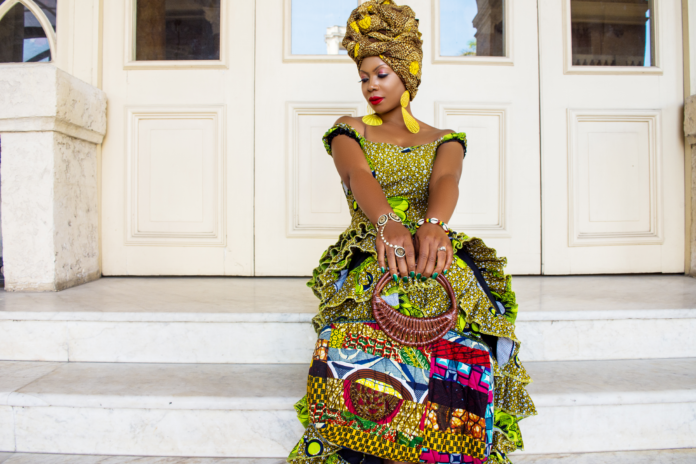Liberian fashion is a vibrant tapestry woven with cultural threads, reflecting centuries of tradition, identity, and community. While modern influences have seeped into urban areas, the heart of Liberian style lies in its rural regions. Let’s explore the rich and meaningful attire worn by Liberians:
1. Men’s Traditional Attire
a. Pants and Round-Neck Shirts:
Pants: Liberian men traditionally wear either short or long pants. These pants are often loose-fitting, allowing for comfort and ease of movement.
Round-Neck Shirts: The quintessential men’s shirt features a round neckline and loose sleeves. These shirts come in various colors and patterns, reflecting regional preferences.
b. Cultural Significance:
Unity: Men’s attire symbolizes unity within the community. The simple yet practical clothing fosters a sense of belonging.
Practicality: The loose fit is ideal for Liberia’s warm climate, allowing ventilation and flexibility.
2. Women’s Traditional Attire
a. The Lappa (Wrap Skirt):
Definition: The lappa is a long wrap skirt made from colorful, patterned fabric. It is wrapped around the waist and secured with a knot or pin.
Variety: Lappas come in an array of designs, from bold geometric patterns to intricate motifs. Each lappa tells a story—of family, heritage, or personal taste.
b. The Bubba (Loose Top):
Description: The bubba is a loose-fitting blouse worn by Liberian women. It typically has short sleeves and a relaxed silhouette.
Comfort and Style: Bubbas allow freedom of movement and are perfect for daily activities. They can be plain or adorned with embroidery and embellishments.
c. Head Wraps:
Purpose: Women often wear head wraps, known as “gele” or “tignon.” These serve both practical and aesthetic purposes.
Symbolism: Head wraps signify cultural pride, marital status, and even mood. They can be worn in various styles, each carrying its own meaning.
d. Cultural Significance:
Femininity: Women’s attire celebrates femininity, emphasizing grace and elegance.
Community Bonds: The lappa and bubba are shared symbols, connecting women across generations. They are worn during celebrations, ceremonies, and everyday life.
3. Rural vs. Urban Influence
Rural Resilience: Traditional Liberian fashion thrives in rural areas, where customs remain strong. Here, clothing is more than aesthetics—it’s a way of life.
Urban Adaptations: In cities, Western clothing has become commonplace. However, glimpses of tradition persist—perhaps a lappa worn during a special occasion or a bubba passed down through generations.
4. Conclusion
Liberian fashion transcends mere fabric; it embodies resilience, heritage, and community. Whether in bustling Monrovia or a remote village, the lappa’s vibrant swirls and the bubba’s loose folds tell stories of pride, love, and belonging. As Liberia continues to evolve, may its traditional attire remain a cherished link to the past and a beacon for the future.







